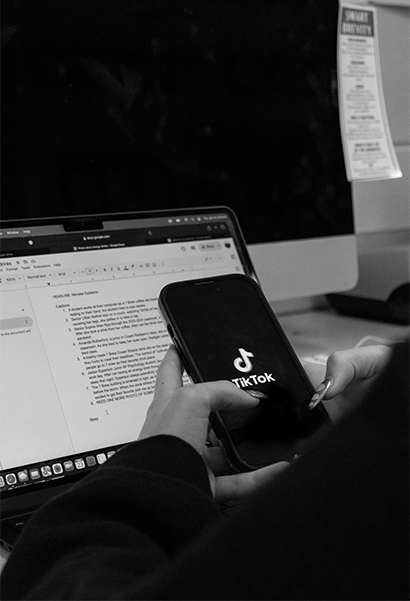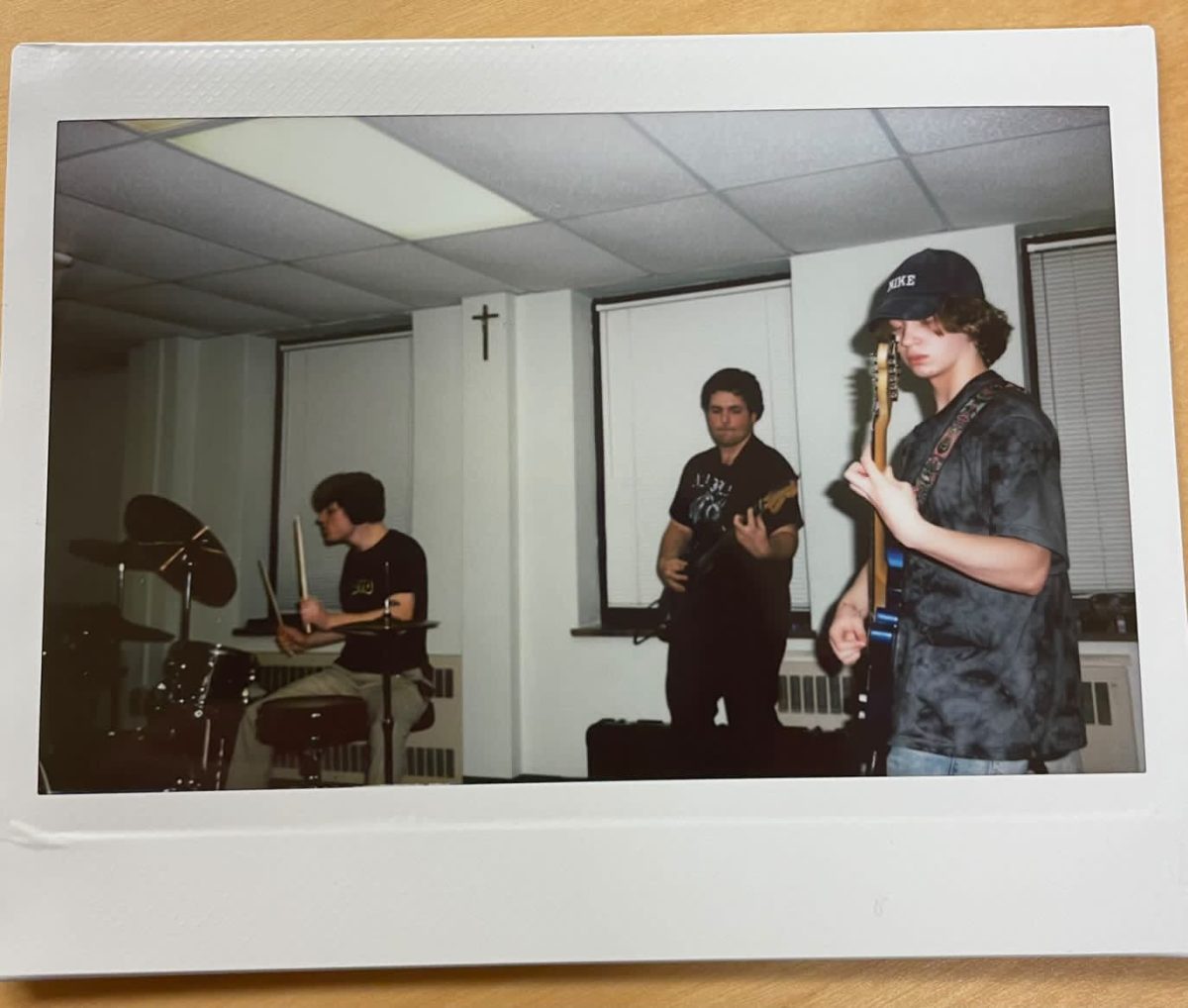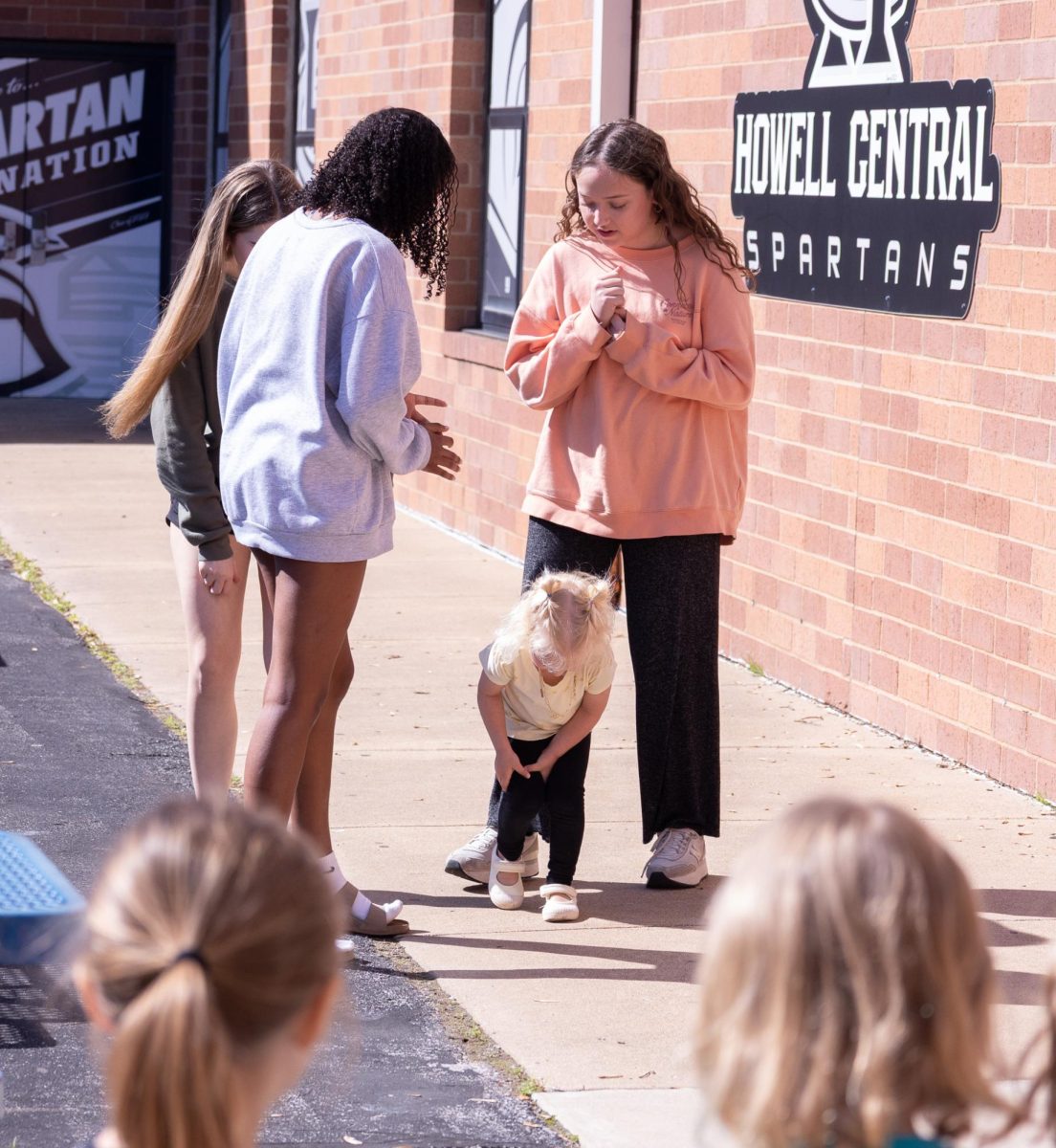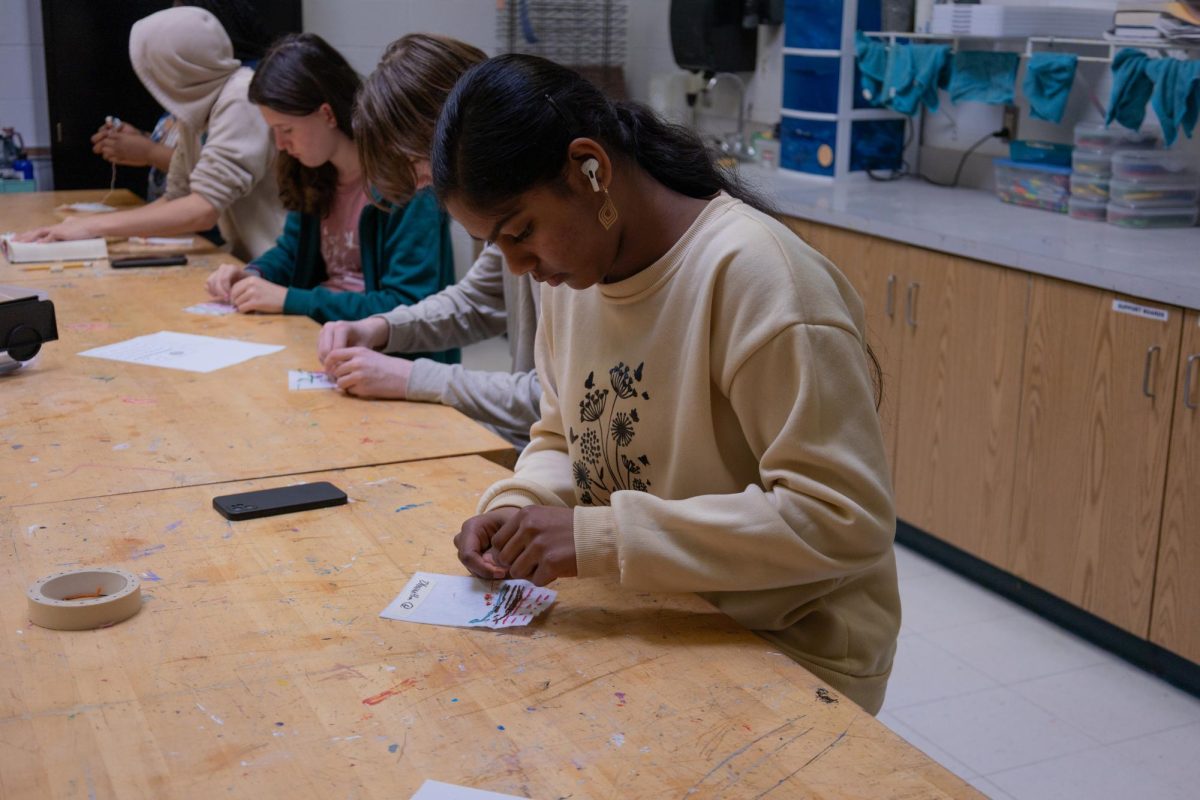By Colin Nichols
Web Co-Editor in Chief
Ever since learning Spanish, languages and human expression have mesmerized me — from the lyrical, majestic and romantic flow, to the culturally rich and intellectually stimulating subtleties. I have practically jumped with excitement at any opportunity to speak with someone in Spanish — to truly connect. Being accepted into a culture is so beneficial to a mind of any age.
With an opportunity to open that door to another culture, we can connect in magical ways to share stories, history, and thought. And to think there’s around 7,000 languages currently spoken in the world. Diversity is an incredible thing.
Senior Nadia Manuschev’s parents are from Bulgaria, so she has traveled to Bulgaria five times, speaks Bulgarian at home, watches media in Bulgarian, and used to go to a Bulgarian school every Sunday before it closed down after COVID-19. She notes the greatest, even tragic, difference between English and Bulgarian speakers.
“The people in Bulgaria are meaner. They’re not as polite and nice as in America. They’re more down to earth — they don’t hide their opinions,” Manuschev said. “It makes me feel more self-conscious. I can’t express my true self because I feel like they’re gonna say something. So I have to kind of hold back my personality.”
Sometimes, even speaking the native tongue is not sufficient for full cultural acceptance. Manuschev attributes this to being born in the United States.
“I still feel like I can’t fully blend in. I feel like in order to be learning Bulgarian, you have to have some connection to Bulgaria, but in Spanish, you feel like everyone’s free to speak and learn Spanish,” Manuschev said.
Since Bulgarian uses the Cyrillic script, Manuschev sometimes will hear Russian or Ukrainian and presume it to be Bulgarian.
“We produce similar sounds. And sometimes I would mistake that for Bulgarian. Once I tried speaking Bulgarian to a Ukrainian couple, I’m like, ‘Oops! Sorry!’ It’s really funny,” Manuschev said.
Manuschev has progressed in her understanding of Bulgarian, and she finds she can better connect to people. She also explains why diversity in language is important.
“It’s good to have diversity in the world, not only one person speaks one language. When you start learning other languages, you can find more people to talk to,” Manuschev said. “When I was little, I didn’t feel as closely connected. But now I have a better understanding.”
For the first 13 years of her life, senior Arshley Wanambisi lived in Kenya, and now after moving to the U.S. in eighth grade she speaks Swahili at home. She has earned the Seal of Biliteracy in Swahili, and her fascination with the language grew because of its immense cultural interconnection. She attained a certain curiosity in understanding the history of the world and the diverse cultural backgrounds of whomever she meets.
“You’re not just looking at a person, you’re looking at a person from a different place… It makes me think, what does this person have to offer?” Wanambisi said. “When I was in Kenya, I hated history, but when I came here, it kind of became one of my favorite subjects.”
Wanambisi explained how Swahili follows unique punctuation rules and how the teachers in Kenya reacted to students dropping those formal rules when at home, affecting their speech at school.
“They would start speaking casually how they would at home… That was the thing with teachers — they did not like that,” Wanambisi said. “If you’re in school and you’re speaking Swahili that you would normally speak to your parents or your friends, it takes away that respect.”
Swahili has been influenced by Arabic and Bantu languages, among others, due to historic trade routes along the east African coast.
“When you mix those languages, I think you’re mixing multiple cultures. When I speak, I just think people actually were interacting, and they decided we can interact more if we combine our languages,” Wanambisi said. “You can see those strands of connections even though they’re distant.”
Senior Manal Elgazar was born in Egypt, and moved to the U.S. when she was four. Elgazar explains how she feels a pride in her Egyptian identity.
“It’s my culture, it’s part of who I am and, especially growing up in the US, I feel like that ties me back to there and reminds me of who I am and who I want to be as a person,” Elgazar said.
Elgazar explains the connection between language and culture.
“Culture stems from the language, I feel like it all starts there. Whenever you hear any language, there’s a certain culture that goes with it. Whenever I hear French, I’m thinking cafes and croissants,” Elgazar said. “If you really try to understand and learn it, you’ll see that it’s beautiful.”
Elgazar relates the song-like quality of each Arabic dialect to her Egyptian Arabic and how the language differences represent the culture of each region.
“Palestinian Arabic is beautiful, they’re just very soft spoken… Egyptian [Arabic] is more abrasive and, it’s not as eloquent, as like the other dialects would be. Iraqi Arabic is also more guttural,” Elgazar said. “Lebanon, they’re very elegant. They’re very dressed up… We’re here to have a good time. We want to laugh.”
Elgazar explains what her religion and culture mean to her.
“Islam literally means peace. That’s the meaning of it, peace. So I feel like that’s the biggest misconception, is that we’re violent or that we’re uneducated, or we’re abusive. And I’m like, no, we have so much respect for women. Tradition is very important to us, and we just hold a lot of values I don’t see a lot today,” Elgazar said.
Elgazar explains how if people look for stereotypes, they will see it in everything.
“Embrace the culture, fall in love with it, because it is beautiful. I feel like if you go there with an open mind, you’re gonna have so much fun. But if you go there with your closed mind — you’re not gonna have a good time. You’re just gonna look for that in everything,” Elgazar said.
Born in India, junior Anshdeep Thind speaks Punjabi, and values from Sikhism guide her in life. Thind explains how she loves to help the homeless, and she attends community meals at the Sikh Study Circle of St. Louis to provide a place for everyone.

“The Harmandir Sahib has four doors, four doors on each side. So anyone can come,” Thind said. “The Sikh Study Circle in St Louis serves free food on Sundays. Everyone’s welcome because we believe everyone’s equal.”
Harmandir Sahib is the most sacred Sikh temple in India, but gurdwara is the name of all other Sikh temples around the world. Not only is equality religiously integrated into Punjabi culture, but linguistically so too.
“We all believe in equality. At the Gurdwara, we sit on the floor together, so like, it’s not poor or rich or young or small or whatever, it’s like, all equal. Just making sure that everyone is treated equal, because that’s what my religion teaches me,” Thind said. “That’s the word: Gurdwara — it can be everywhere, but the Harmandir Sahib is one place.”
When learning a language, many might consider each word just another flashcard, but many times these lyrical words have deeper meanings rooted in religion, for example. Thind describes the sacred Sikh text, Guru Granth Sahib.
“Guru Granth Sahib. It looks like a book, but we treat it as God because we think it’s guru, because we learn from it… there’s like 1000s of angs, we don’t call them pages, we call them like parts, not like body parts, just parts like a human part, appendages,” Thind said. “Waheguru is in everyone. That’s what we believe. It’s one God, but it’s in you, it’s in me, it’s in everyone.”
Every place has a unique culture just waiting to be explored. With an open mind and a curiosity to learn, one will discover the beauty of culture, history, and beyond. However, entwined within are mystical languages — not boundaries to be overcome, but keys along the path of connection and expression.













